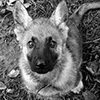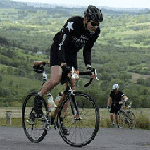9 Photography Mistakes You Don’t Know You Are Making
You are probably amongst those who make tons of photography mistakes without even knowing it. I’m not good either. Every photographer as a beginners makes a lot of mistakes, the only difference is that some learn from it and some don’t even care to do anything. After looking at many such mistakes or photography errors, here are 9 of such photography mistakes that commonly occur for new photographers as well as the more established ones too. Read the article and make sure you’re not making any of these 9 most common Photography mistakes.
1. Blurry Pictures:
The blurred picture is one error or mistake that majority of amateur photographers want to get rid off. We often hear new photographers complaining about their images coming out blurred. Do you know the reason for this? There could be two possibilities; probably there’s isn’t much light reaching the sensor or you are struggling to hold your camera still for long. If it is because of the light, make sure you choose a higher ISO for faster shutter speed. If it is because you can’t hold your camera still, then using a tripod is the ultimate solution.
2. Too Much Contrast
Contrast refers to the difference between the light and dark areas of an image. A strong difference between these areas will make your pictures look unprofessional and incorrect. This problem is usually seen in pictures taken during the bright sunny day. Using flash to fill in these dark areas is the solution to fix this problem.
3. Red Eye
Another very common problem that amateur photographers struggle to cope up with is the red-eye. Red-eye is the problem that occurs when you photograph light-eyed people. Why it occurs? It occurs when the camera flash reflects off the retina. Avoid using the built-in camera flash to get away with this problem, or ask your subject to look away from the camera while shooting. In situations where both these solutions make no sense to you, it’s better to use an image editing software
4. Color-Casts
Another very popular mistake that we amateur photographers make is off-color pictures. An off-color or a color cast is an unwanted hint of color or a color shift in a photo. In this situation, a particular color tone is evenly spread throughout the picture. For example; a picture taken indoors without the flash may have a yellow(ish) tone all over the picture. It doesn’t look natural at all. In simple words, it is referred as imbalanced colors. To avoid color cast to happen, wither use auto mode to click pictures or use proper WB (white balance) setting.
5. Far-off Subjects
Sometimes, we are too busy capturing a wider shot wherein we forget that our subject is too far to create an impact. If you want all the attention on the subject, make sure it is close enough to be noticed. TO keep your subject in focus & visible, either zoom or move closer. Another alternative available is to use an image editing software & crop the image later.
6. Image Noise:
Image noise is defined as random variations of brightness or color information in the picture. This image noise is often visible as grains in film and pixel level variations in digital images. Pictures clicked during the night are prone to this noise as compared to the ones clicked during the day. To reduce this noise use the finest image quality setting available on your camera. The higher the ISO the more noise will appear. And when you enlarge a noisy image you see more grains on it.
7. Underexposed Pictures
An underexposed picture is the one that looks too dark as if there wasn’t sufficient light available while taking pictures. It happens when the amount of light that reaches the sensor is not enough and it results in dark looking pictures. Try opening the aperture to allow more light in and if you have an advanced camera, then you can try and adjust exposure by selecting ‘+’ symbol to add more light.
8. Overexposed Pictures
The overexposed pictures are the ones that look too bright and lack details. This usually happens when too much light hits your camera sensor. To control the amount of light that enters your sensor, try underexposing the image by choosing -0.5 or -1.
9. Low Resolution
Shooting in low resolution means that you are compromising on the image quality. Shooting in low resolution will help you save a lot of memory space but, you won’t be able to print large photographs. Instead, carry some extra memory cards so that you don’t need to click in the low resolution to save space.









